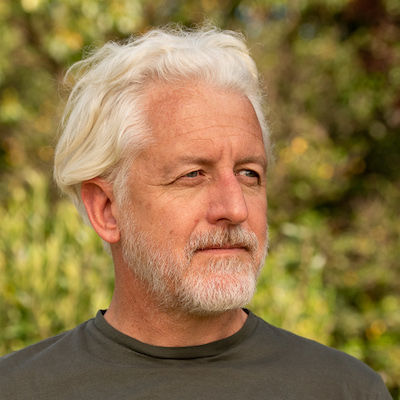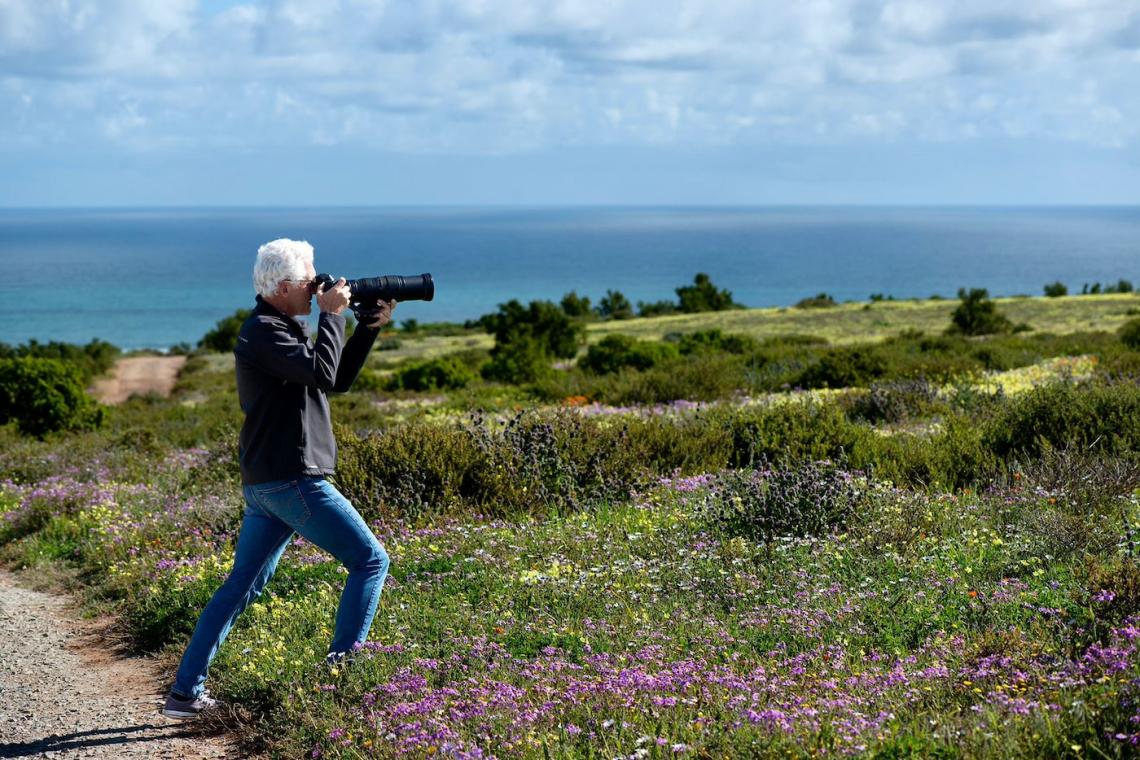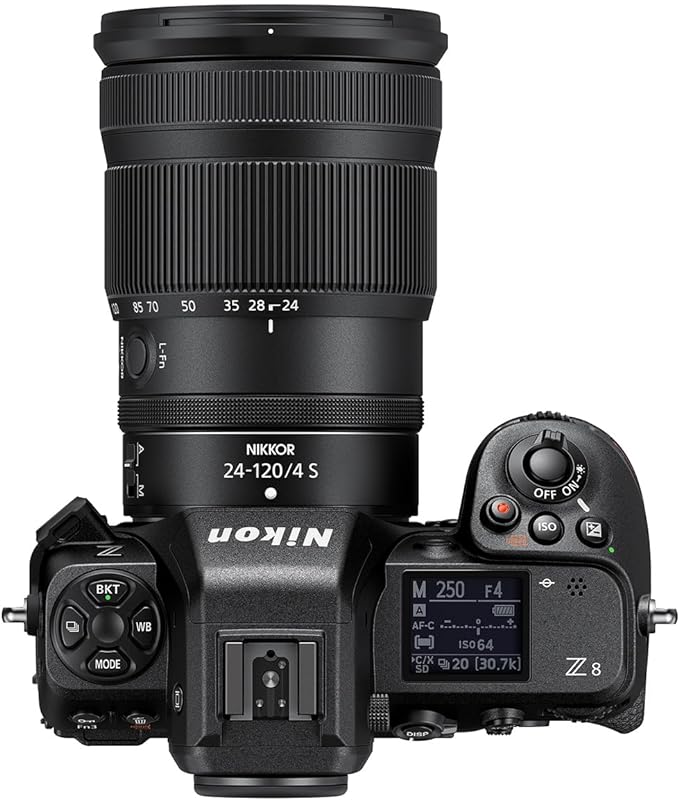Having been a Nikon shooter for years, I cannot explain the excitement I felt getting to review the Nikon Z8. Nikon provided me with a loan unit, and I literally could not wait to get out there and let it loose on some wildlife and birds. As one of the last photographers to be out there on my trusted DSLR, this is the camera that could make me make the switch. Ideally for wildlife and bird enthusiasts and photographers, the Nikon Z8 offers a high-end mirrorless camera with many features and the performance of the flagship Nikon Z9, but in a smaller and more affordable package.
All images were downloaded from Lightroom at 90% quality and also resized to 700px wide and reduced in quality to 90% on a Web Image Optimiser.
Update December 2025: Is the Nikon Z8 still the king?
Two years after release, the Nikon Z8 hasn't aged a day—it has evolved. Thanks to massive Firmware updates (v2.0 and beyond), this camera now has better bird detection and 'Auto Capture' than it did at launch.
The Verdict for 2026: With the release of the Nikon Z6 III, the question isn't 'Is the Z8 good?' It's 'Do you need 45 Megapixels?' If you crop your bird photos heavily, the Z8 is still the only choice; if you don't, save money and get the Z6 III.
How the Z8 got better for free
- Deep Learning Bird Detection: It’s stickier now than in 2023.
- Auto Capture: You can set the camera up by a watering hole, walk away, and it takes photos automatically when a lion walks into the frame.
Z8 vs. Z6 III Comparison
Feature | Nikon Z8 (The Pro) | Nikon Z6 III (The Speedster) |
Resolution | 45.7 MP (Crop heavily!) | 24.5 MP (Don't crop much) |
Viewfinder | 3000 nits | 4000 nits (Brighter) |
Pre-Release | Yes | Yes (Newer version) |
Best For | Birds, Print, Cropping | Low Light, Speed, Video |
Price | $$$ | $$ (Save ~$1000) |
The Z8 has 45 megapixels. That means you can use 'DX Crop Mode' and turn your 500mm lens into a 750mm lens and still have a 20MP image. You can use this simulator to see the difference.
The Technical Stuff
Unlock your photography potential! Have a look at this Michigan State University photography course on Coursera. Subscribe to our EarthWise Forum to discuss your photography journey in our photography section.
The Nikon Z8 has a 45.7 MP stacked CMOS sensor, a 3.69m-dot OLED viewfinder, a 3-inch bi-directional tilting touchscreen, and a dual card slot that accepts CFexpress type B/XQD and SD cards. It can shoot up to 20 fps in RAW, 30 fps in hi-res JPEG, and 120 fps in lo-res JPEG, with full autofocus and autoexposure tracking. It can also record 8K videos up to 60p and 4K videos up to 120p and supports various formats such as H.265, ProRes, and ProRes RAW. It has a 5-axis in-body stabilisation system that can provide up to 6 stops of compensation with specific lenses and a 493-point hybrid autofocus system that covers 90% of the frame. It is compatible with the Z-mount lenses, as well as the F-mount lenses with the FTZ or FTZ II mount adapters.
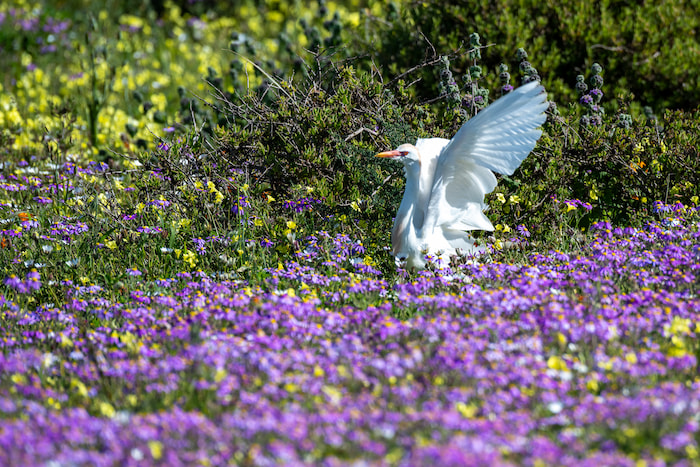
Little Egret - Nikon Z8 - 500mm 1/2000sec f8 ISO 160
The Nikon Z8 is designed to appeal to both professional and enthusiast photographers who want a versatile and powerful camera that can handle a wide range of situations and subjects. It is especially remarkable for wildlife and bird photography, thanks to its fast and accurate autofocus, high-speed continuous shooting, and high-resolution video capabilities. Thanks to its large sensor, advanced image processor, and high-quality lenses, it can produce stunning images with rich details, dynamic range, and colours.
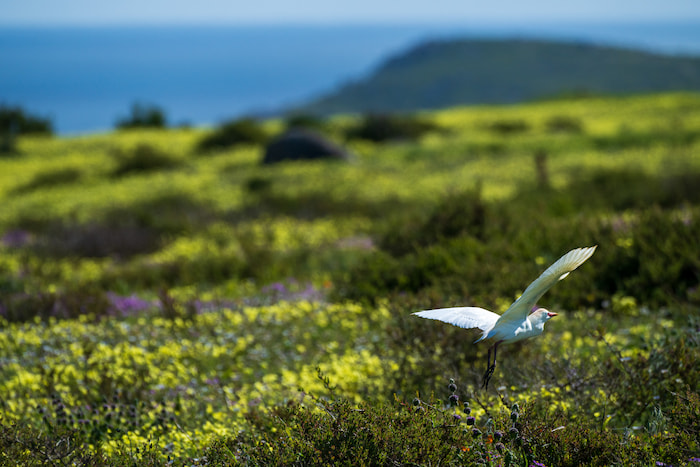
Egret in Flight Landscape - Nikon Z8 - 500mm 1/2500sec f8 ISO 160
Using the Z8 to Photograph Birds and Wildlife
For my first shoot to test out this beast, I opted to go to the West Coast National Park based on the West Coast of South Africa. During spring, it is known for the fantastic flower show it provides South Africans who travel from far away to see the views. My mission was slightly different, though. I wanted to shoot some wildlife shots with the flowers as background. But the alluring beauty of the area sucked me in, and I ended up doing quite a few landscape photographs.
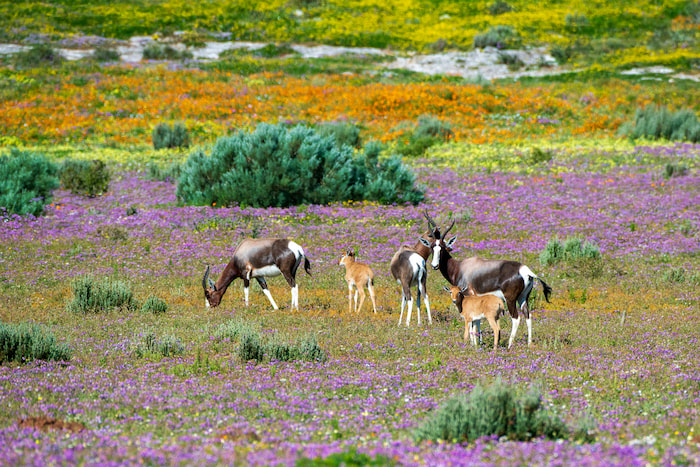
Bontebok in the flowers - Nikon Z8 - 500mm 1/3200sec f8 ISO 160
The first day did not start without a hitch; the camera was delivered with strange settings, which would not have been the standard factory settings. However, to fix this, I found the menu user-friendly, especially if you are a Nikon shooter. You can expect to find many of the settings in the places where you expect them. I used the Nikon AF-S NIKKOR 200-500mm f/5.6E ED VR lens with the FTZ mount adaptor for the higher zoom photos. The Nikon team sent me a Nikon NIKKOR Z 70-200mm f2.8 VR S lens to review with the camera.
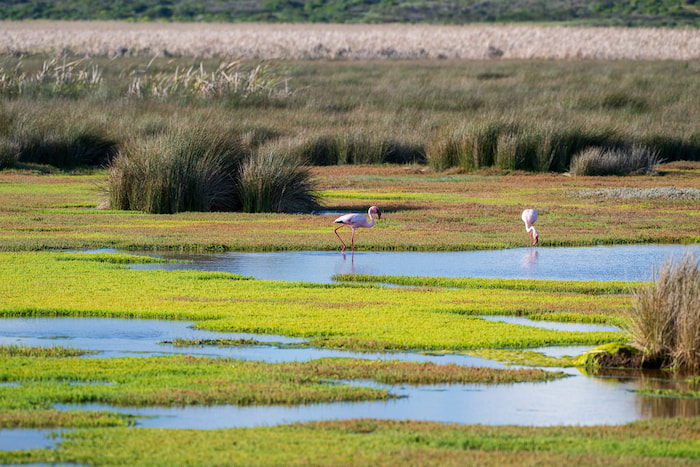
Flamingo Landscape - Nikon Z8 - 290mm 1/2500sec f6.3 ISO 160
I took the camera on a dedicated bird shoot for a second test day. For this, I went to the world-famous Kirstenbosch Botanical Gardens in Cape Town. The day delivered such a fantastic array of birds. The camera performed flawlessly. With the Active D lighting issue sorted out and the settings on the camera the way I like them, I could shoot most of the day with unbelievable results. Unlike the Z6 in my review here, the Z8’s battery lasted the day (more details on the Active D lighting and the battery later). The camera handled shaded situations exceptionally well. The camera handled this image flawlessly when the bird was in a dark area.
Here are some of the notes about the Nikon Z8 I took on the day, it is not without its flaws and limitations. But it is right up there at number 1 on my Christmas list.
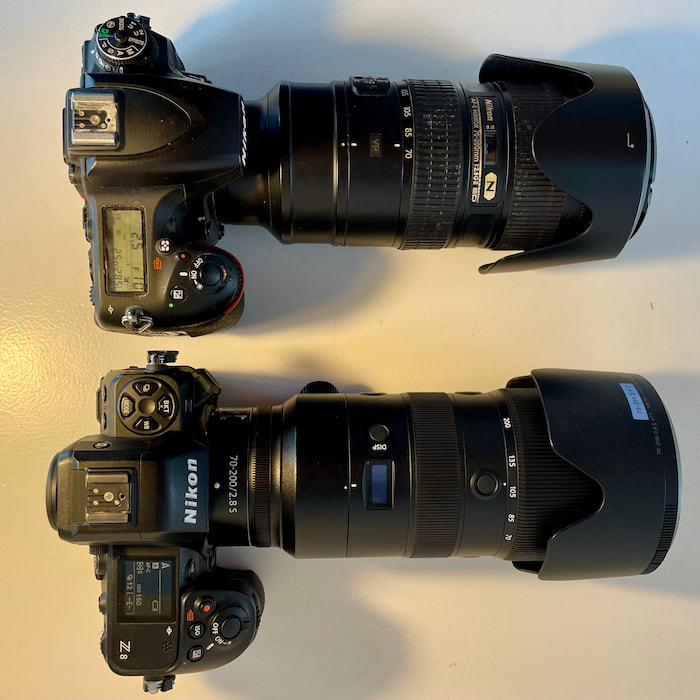
Nikon Z8 compared to Nikon D750
Nikon Z8 Form Factor
One of the Nikon Z8's most appealing aspects is its form factor. The Z8 offers a comfortable and ergonomic grip, similar to my Nikon D750 DSLR. The Z8 is smaller and lighter than the flagship Nikon Z9 but still has a rugged, weather-sealed body that can withstand harsh conditions. The Z8 feels good in the hand and performs well in the field, especially for wildlife and bird photography. It is larger and more comfortable for larger hands and has more direct-access buttons than the lower-end Z6/Z7 models, which makes it easier and faster to change settings and access functions. The buttons are well-placed and easy to reach and can be customised to suit your preferences. The Z8 also has a dedicated AF-ON button on the back and two Fn buttons on the front for quick access to autofocus and other features.
View the Nikon Z Series on Amazon
Nikon Z6ii | Nikon Z7ii | Nikon Z8 | Nikon Z9
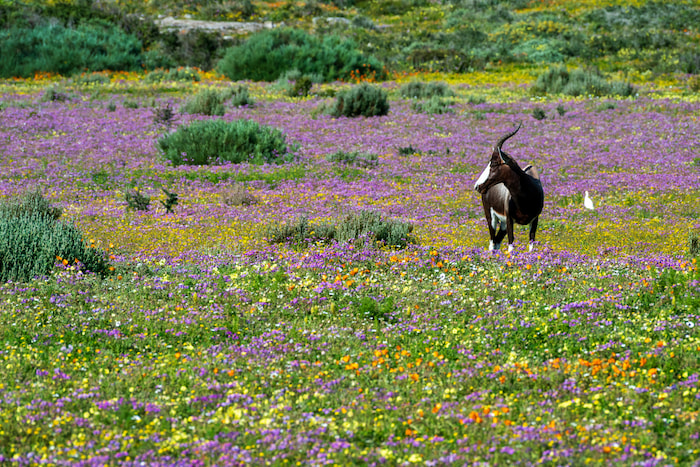
Bontebok Male - Nikon Z8 - 500mm 1/800sec f14 ISO 160
The Mode Dial Replaced by Buttons
The lack of a mode dial. Unlike older models and most other cameras, the Z8 does not have a mode dial for changing the shooting mode but rather four buttons. You had to hold the mode buttons and use the screen or rear dial to select the modes. This can be inconvenient and slow, especially if you need to switch modes quickly and frequently. I, however, found having the white balance and bracketing options more accessible and convenient. It has to be noted that I only had the camera for a week. The mode dial buttons are something I need to get used to, my use of them will improve over time.
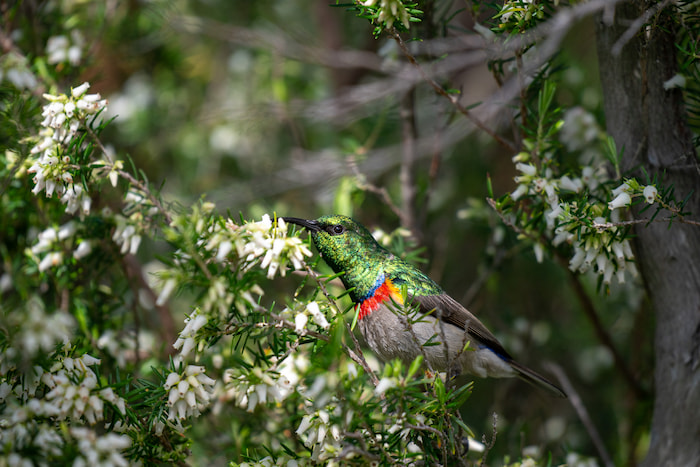
Sunbird - Nikon Z8 - 500mm 1/500sec f5.6 ISO 160
The Screen Tilt
The screen only tilts 45 degrees down and 90 degrees up. The Z8 has a bi-directional tilting screen, which means it can tilt up and down but not sideways. This can limit your shooting angles and perspectives, especially if you want to shoot in portrait orientation or from very low or high angles. Some other cameras, such as the Canon EOS R5 and the Sony A7R V, have fully articulating screens that can flip out and rotate in any direction, which can be more useful and flexible for shooting in different situations and modes.
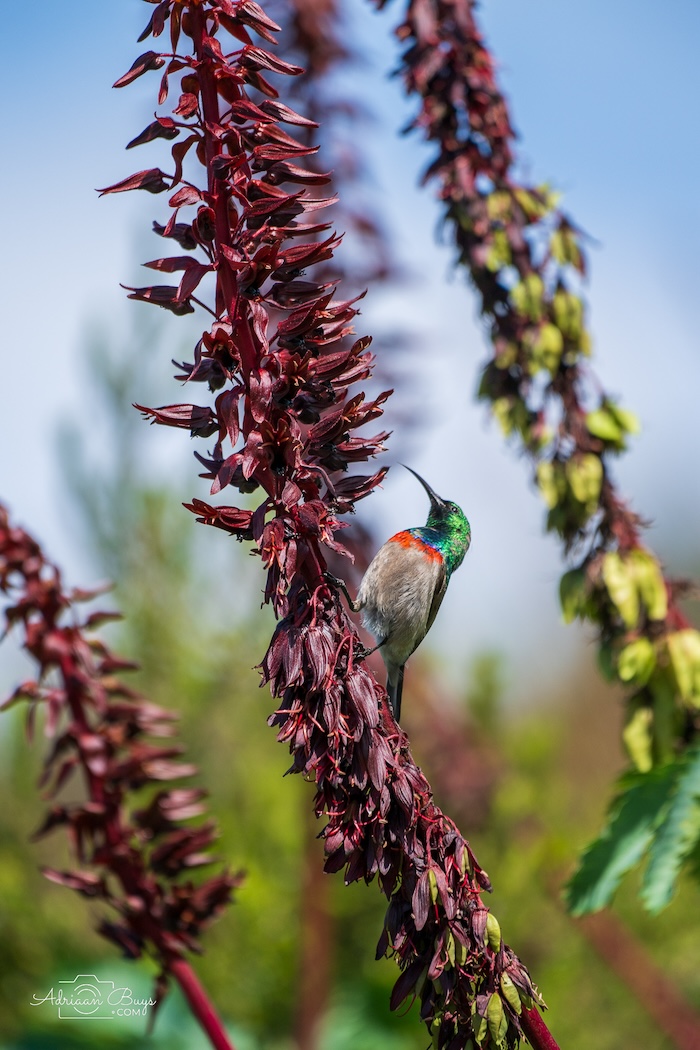
Sunbird - Nikon Z8 - 500mm 1/2000sec f5.6 ISO 160
The Battery Life
The battery saver standby mode. The Z8 has a battery saver mode that puts the camera on standby after a certain period of inactivity to conserve power. However, this mode can also affect the camera’s responsiveness and performance. When you wake up the camera from standby, it can take a couple of seconds to focus and shoot, which can cause you to miss the shot. You can adjust the battery-saver mode settings in the menu or turn it off completely, but this will also reduce the camera's battery life. Overall, I found the battery performance good, I especially like that I can carry the spare batteries I already own.
The Z8 uses the EN-EL15 series batteries, which are not very powerful compared to some other cameras. The Z8 has a rated battery life of 420 shots per charge, which is lower than the Z9’s 750 shots, the R5’s 490 shots, and the A7R V’s 530 shots. You can extend the battery life using the optional MB-N12 battery grip, which can hold two batteries, or the EH-8P AC adapter, which can power the camera from a wall outlet or a power bank. For wildlife and birds, this would not be a solution for me, though. As the batteries are standard, carry a spare. Lighten the load.
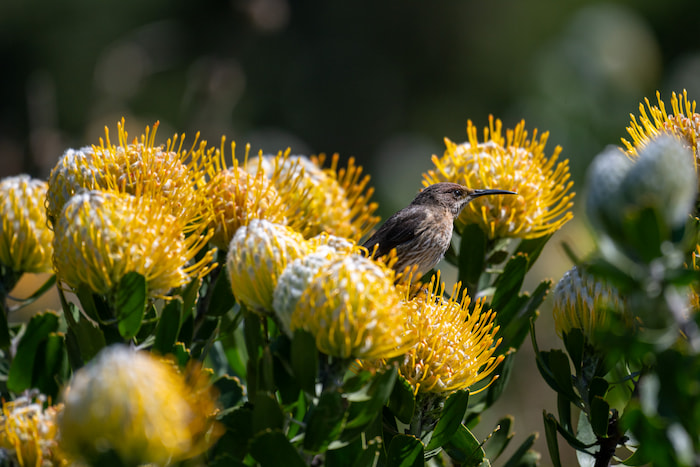
Cape Sugarbird - Nikon Z8 - 500mm 1/2000sec f5.6 ISO 160
Active D Lightingsetting Underexposure Issue
This setting caused me a real headache. On my first shoot in very bright light, the camera underexposed all my shots by two stops, and I could not figure out why. The exposure compensation does not show underexposure on the camera viewfinder screen. So, this was a surprise I had to deal with in post-processing. I had to Google the issue; thank goodness for forums. It turned out that underexposure was due to the active D lighting that was on extra high in the demo unit. Depending on the scene and the metering mode, this feature can cause the camera to underexpose the image. You should turn off the Active D-Lighting feature or use a lower setting to avoid the underexposure headache I had to deal with.
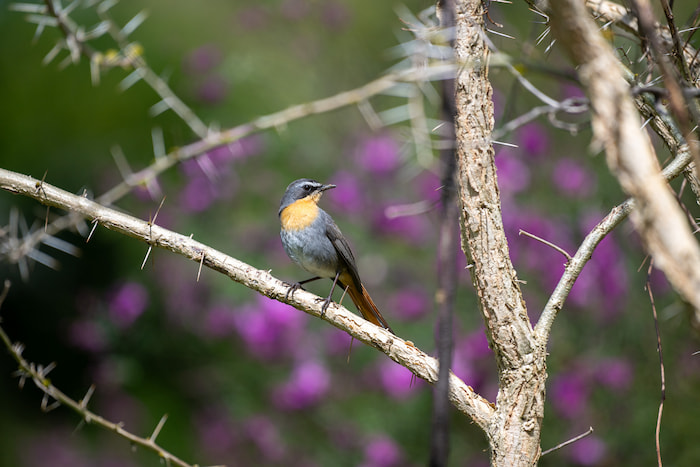
Cape Robin Chat - Nikon Z8 - 500mm 1/1600sec f5.6 ISO 160
The autofocus performance and settings.
I use the back button autofocus method, which means I assign the autofocus function to the dedicated button at the back of the camera instead of the shutter button. This can give me more control and flexibility over the autofocus, as you can separate it from the shutter release.
The 3D focus tracking mode, which is supposed to track the subject across the frame, did not perform well. I found the Dynamic Area AF (S) mode better, but I lost some sharpness with certain images when using the Dynamic Area AF (M).
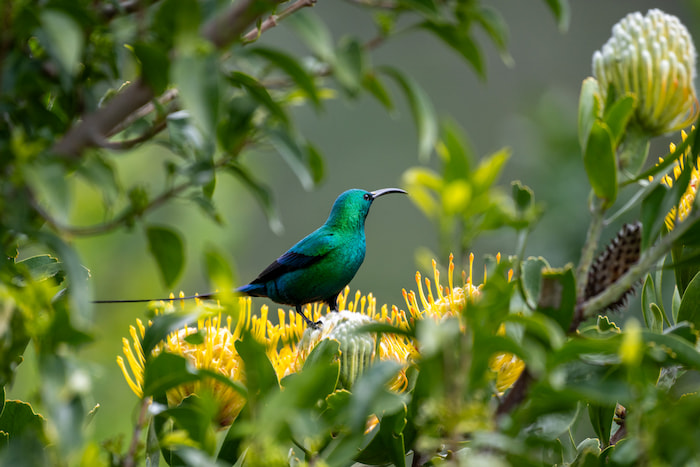
Malachite Sunbird - Nikon Z8 - 500mm 1/800sec f5.6 ISO 160
The Nikon Z8 has a 493-point hybrid autofocus system, which uses both phase-detect and contrast-detect points and covers 90% of the frame. It also has various autofocus modes and settings, such as single-point, wide-area, auto-area, eye-detection, animal-detection, and subject-tracking. The autofocus performance and accuracy can depend on many factors, such as the subject, the lighting, the lens, the distance, the movement, and the user preference.
The Z8’s autofocus system is generally fast and reliable. Still, it may not be as advanced or intelligent as other cameras, such as the Z9, the R5, or the A9 II, which use deep learning and artificial intelligence to enhance the autofocus. You can try different autofocus modes and settings and adjust the autofocus sensitivity, speed, and priority to find the best combination for your shooting situation and style.
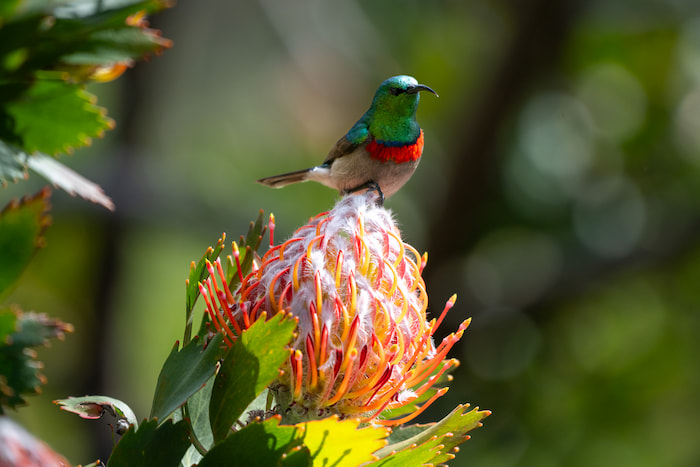
Double Collared Sunbird - Nikon Z8 - 500mm 1/1600sec f5.6 ISO 160
Positive Aspects:
High-Resolution Sensor: The 45.7 MP stacked CMOS sensor offers excellent detail and resolution, suitable for capturing intricate details in wildlife and bird photography.
Versatile Shooting Modes: The camera's ability to shoot at high frame rates in RAW and hi-res JPEG, along with impressive video capabilities (8K at 60p, 4K at 120p), makes it versatile for various situations.
Autofocus and Tracking: The 493-point hybrid autofocus system covering 90% of the frame, combined with features like eye and animal detection, contributes to fast and reliable autofocus performance.
Compatibility with Lenses: The Z8's compatibility with Z-mount and F-mount lenses through adapters widens the range of available lenses for users.
Image Quality: The camera's large sensor, advanced image processor, and high-quality lenses contribute to the production of stunning images with rich details, dynamic range, and colours.
Limitations:
Mode Dial Replacement: The absence of a traditional mode dial, replaced by buttons, may require some adjustment for users accustomed to the previous design.
Tilting Screen Limitation: The bi-directional tilting screen's restriction to 45 degrees down and 90 degrees up could limit shooting angles, especially in portrait orientation or when shooting from extremely low or high angles.
Battery Life and Standby Mode: The battery life, though manageable, is not as high as some other cameras in its class. The standby mode for battery saving might impact responsiveness, causing a delay when waking up the camera.
Active D Lighting Underexposure Issue: The Active D-Lighting setting, when on a high setting, caused underexposure in bright light situations. Adjusting or turning off this feature can mitigate the issue.
Autofocus Performance: While generally fast and reliable, some issues were noted with the 3D focus tracking mode. Users may need to experiment with different autofocus modes and settings to find the best combination for their specific needs.
My conclusion after one week with the Nikon Z8
Overall, the Nikon Z8 is the most impressive camera with a lot of value and performance for its price and size. It is an excellent choice for wildlife and bird photography as it is a Z9-like camera at the size, weight, and cost suitable for wildlife photography. It, of course, lacks a few of the Z9 features, as should be expected. It is an excellent upgrade from the D850 or any other DSLR, as it provides the benefits of the mirrorless system, such as the electronic viewfinder, the in-body stabilisation, the fast continuous shooting, and the high-resolution video. It also provides clear advantages over the Z6 & 7 for wildlife and bird photography, especially in the form factor.
You may be out here comparing all the different brands and specs to find that next camera. The Z8 is not perfect, and it has some drawbacks and limitations, as discussed above, but they are not deal-breakers, and they can be overcome or mitigated with some adjustments and accessories. The Z8 is one of the best cameras Nikon, trusted by many wildlife and bird photographers, has ever made. As a Nikon shooter, the consistency in the shooting experience and menu structures are essential, and it is most definitely at the top of my list.
Shop for a cause
Conservation Mag is an Amazon affiliate. By clicking on the links to do your shopping, you support our cause without paying anything extra.
The Nikon Z8 on amazon.com
